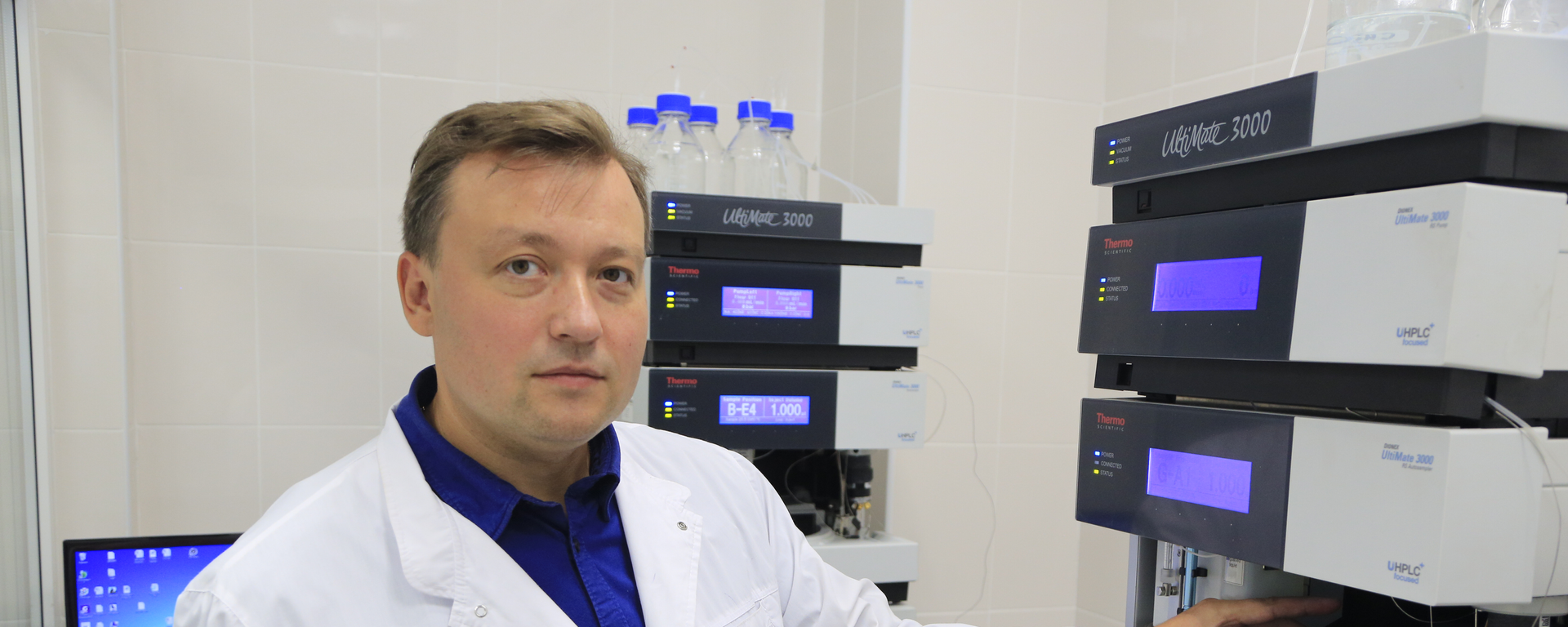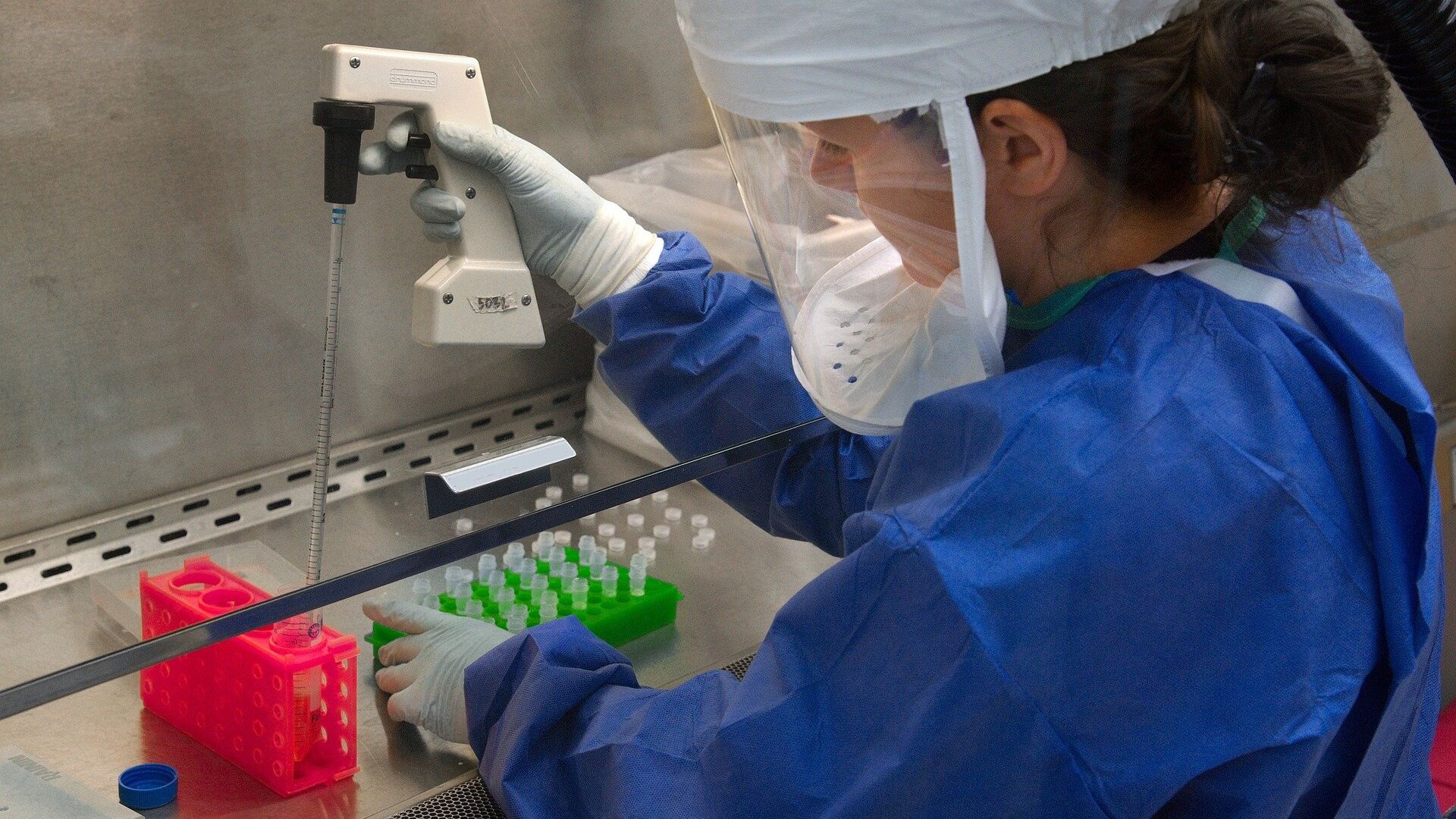https://sputnikglobe.com/20231011/scientists-suggest-using-glycine-as-component-in-medical-electronics-1114090688.html
Scientists Suggest Using Glycine as Component in Medical Electronics
Scientists Suggest Using Glycine as Component in Medical Electronics
Sputnik International
An international group of scientists based in Russia’s National Research University of Electronic Technology (MIET) have managed to enhance glycine crystals' piezoelectric effect - where an electric charge is produced by applying pressure. According to researchers, the piezoelectric "response" is more efficient in glycine than in regular crystals.
2023-10-11T11:26+0000
2023-10-11T11:26+0000
2023-10-11T11:26+0000
science & tech
beyond politics
russia
scientific research
scientists
scientific study
scientists
https://cdn1.img.sputnikglobe.com/img/105137/18/1051371846_0:108:1921:1188_1920x0_80_0_0_c42ac9231abf5c006ea4794e9dec03a8.jpg
The enhancement was made possible through the mechanical polishing modification of this amino acid. The scientists clarified that the work done is essential to create small biocompatible electromechanical devices. The results are published in Physica Scripta.Developing micro and nanoscale electrical devices compatible with the human body is a major advance in high-tech medicine.For example, studies have shown that cell-targeted electrical stimulation accelerates wound healing. Also, integrating electrical elements into different implants improves their manageability.The researchers indicated that today, manufacturers use polymers and biocomposites that are similar to human tissue when working on such electronics.However, it is the materials that are made of compounds largely present in the human body that are the closest to our biology. Glycine is an example of such a substance - it is a basic amino acid that works as a neurotransmitter in the central nervous system and is present in many proteins. When in a solid state, the compound takes a crystal form with various internal structures. Some crystalline solids show a piezoelectric effect. Experts added that charged particles can move at higher temperatures - a phenomenon known as ferroelectricity.Researchers from MIET and MIREA [the Russian Technological University], along with Portuguese and Dutch scientists, developed a way to increase the electrical efficiency of glycine crystals with chemical mechanical polishing (CMP).The scientist said that the mechanical polishing of γ-glycine improves its piezoelectric properties, which in turn can lead to increased sensor sensitivity and collector efficiency. The amplified piezoelectric effect is dependent on the pressure orientation - for example, it is tripled along the axis, and quintupled on the perpendicular plane.In the future, the research team from MIET and MIREA plans further studies into other mechanical and chemical methods of processing γ-glycine and similar materials to optimize their piezo and ferroelectric properties.MIET is part of the "Priority-2030" program (a federal-level program aimed at supporting Russian universities) within the "Science and Universities" national project.
https://sputnikglobe.com/20230918/russian-scientists-discover-gene-responsible-for-stroke-severity-1113467494.html
russia
Sputnik International
feedback@sputniknews.com
+74956456601
MIA „Rossiya Segodnya“
2023
Sputnik International
feedback@sputniknews.com
+74956456601
MIA „Rossiya Segodnya“
News
en_EN
Sputnik International
feedback@sputniknews.com
+74956456601
MIA „Rossiya Segodnya“
Sputnik International
feedback@sputniknews.com
+74956456601
MIA „Rossiya Segodnya“
international group of scientists, russia’s national research university of electronic technology, enhance glycine crystals
international group of scientists, russia’s national research university of electronic technology, enhance glycine crystals
Scientists Suggest Using Glycine as Component in Medical Electronics
An international group of scientists based in Russia’s National Research University of Electronic Technology (MIET) have managed to enhance glycine crystals' piezoelectric effect - where an electric charge is produced by applying pressure. According to researchers, the piezoelectric "response" is more efficient in glycine than in regular crystals.
The enhancement was made possible through the mechanical polishing modification of this amino acid. The scientists clarified that the work done is essential to create small biocompatible electromechanical devices. The results are published in
Physica Scripta.
Developing micro and nanoscale electrical devices compatible with the human body is a major advance in high-tech medicine.
For example, studies have shown that cell-targeted electrical stimulation accelerates wound healing. Also, integrating electrical elements into different implants improves their manageability.
The researchers indicated that today, manufacturers use polymers and biocomposites that are similar to human tissue when working on such electronics.
However, it is the materials that are made of compounds largely present in the human body that are the closest to our biology. Glycine is an example of such a substance - it is a basic amino acid that works as a neurotransmitter in the central nervous system and is present in many proteins. When in a solid state, the compound takes a crystal form with various internal structures. Some crystalline solids show a piezoelectric effect. Experts added that charged particles can move at higher temperatures - a phenomenon known as ferroelectricity.
Researchers from MIET and MIREA [the Russian Technological University], along with Portuguese and Dutch scientists, developed a way to increase the electrical efficiency of glycine crystals with chemical mechanical polishing (CMP).
"Crystals, polished at the molecular level, demonstrated improved piezo and ferroelectric activity and more efficient electric field switching," explained Maxim Silibin, associate professor at MIET's Institute of Advanced Materials and Technologies.
The scientist said that the mechanical polishing of γ-glycine improves its piezoelectric properties, which in turn can lead to increased sensor sensitivity and collector efficiency. The amplified piezoelectric effect is dependent on the pressure orientation - for example, it is tripled along the axis, and quintupled on the perpendicular plane.
"Figuring out and managing γ-glycine crystals will allow us to build devices for directly transmitting information from impulses of the nervous system to the brain," Professor Silibin added.
In the future, the
research team from MIET and MIREA plans further studies into other mechanical and chemical methods of processing γ-glycine and similar materials to optimize their piezo and ferroelectric properties.

18 September 2023, 14:24 GMT
MIET is part of the "Priority-2030" program (a federal-level program aimed at supporting Russian universities) within the "Science and Universities" national project.



